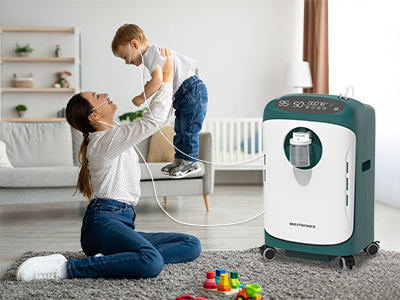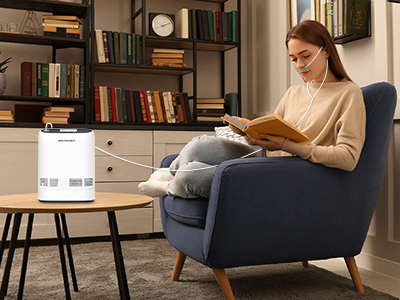30 Dec 2024
Oxygen therapy is a cornerstone of treatment for individuals with certain respiratory conditions. By delivering life-sustaining oxygen, it alleviates symptoms such as shortness of breath and helps prevent complications associated with low oxygen levels. However, the duration of therapy can vary widely between individuals. For some, oxygen therapy may be a round-the-clock necessity, while for others, it is only required intermittently.

Factors That Influence Oxygen Therapy Duration
The number of hours an individual requires oxygen therapy depends on several key factors. The severity of the underlying medical condition is a primary determinant. Those with advanced-stage chronic diseases often require extended or continuous oxygen supplementation. Activity levels also play a pivotal role; physical exertion increases oxygen demand, which may necessitate supplemental oxygen even for individuals who don’t require it at rest. Ultimately, the prescribed duration must align with the guidance of healthcare professionals, who base their recommendations on diagnostic tests and overall health status.
Chronic Conditions and Oxygen Needs
For individuals living with chronic conditions like chronic obstructive pulmonary disease (COPD), oxygen therapy often becomes a continuous necessity. Hypoxemia, or low blood oxygen levels, is a hallmark of advanced COPD. In such cases, doctors may prescribe oxygen for up to 16 to 24 hours a day to prevent organ damage and maintain energy levels. Meanwhile, conditions such as sleep apnea or interstitial lung disease may require more intermittent use. Here, oxygen therapy is typically reserved for specific times, such as during physical activity or while sleeping, to address fluctuations in oxygen saturation.
Oxygen Therapy for Acute Situations
In some cases, oxygen therapy is a temporary intervention. After surgery, particularly those involving the heart or lungs, patients may need supplemental oxygen to facilitate recovery. Similarly, respiratory infections like pneumonia or acute exacerbations of chronic diseases can cause short-term drops in blood oxygen levels. During these episodes, therapy duration is dictated by the time it takes for oxygen saturation levels to stabilize. Acute usage can range from a few hours to several days, depending on the severity of the condition and the patient’s response to treatment.
Role of Nocturnal Oxygen Therapy
Nighttime oxygen therapy addresses the unique needs of the body during sleep. Many individuals experience reduced oxygen saturation while asleep due to shallow breathing or sleep-disordered breathing. Conditions such as nocturnal hypoxemia or obstructive sleep apnea necessitate additional oxygen support at night. Left untreated, these conditions can lead to complications like hypertension, arrhythmias, and cognitive decline. If you find yourself waking up fatigued or experiencing morning headaches, it may be an indication that nocturnal oxygen therapy is required, even if you don’t need oxygen during the day.

Portable Oxygen and Flexibility in Therapy
For those requiring oxygen therapy, mobility and flexibility are key to maintaining quality of life. Portable oxygen concentrators (POCs) provide a solution, allowing users to continue their therapy while engaging in daily activities or traveling. With advancements in lightweight and compact designs, portable concentrators make it easier to adhere to prescribed oxygen schedules without compromising independence. Whether it’s a short walk in the park or an extended trip, POCs empower patients to manage their oxygen needs on the go.
Dangers of Overuse or Underuse
Balancing oxygen therapy is critical. Underusing supplemental oxygen can lead to hypoxemia, resulting in fatigue, confusion, and long-term organ damage. On the other hand, excessive oxygen intake—known as oxygen toxicity—can suppress natural respiratory drive in certain individuals, especially those with COPD. This highlights the importance of adhering to prescribed levels and durations. Regular follow-ups with healthcare providers ensure that therapy remains tailored to the patient’s evolving needs, mitigating risks and maximizing benefits.
Consulting with Your Doctor to Determine the Right Schedule
Determining the optimal duration of oxygen therapy requires careful consultation with your doctor. Tests such as pulse oximetry and arterial blood gas (ABG) analysis help pinpoint your oxygen saturation levels and evaluate your respiratory function. Based on these results, your doctor will prescribe a therapy schedule tailored to your specific condition. As your health evolves, adjustments to the duration and flow rate may be necessary. Open communication with your healthcare team ensures that your therapy remains effective and aligned with your lifestyle.
Living with Oxygen Therapy
Incorporating oxygen therapy into daily life may seem challenging at first, but with the right strategies, it can become seamlessly integrated. Using lightweight equipment, organizing spaces for convenience, and planning outings with portable concentrators are just a few ways to maintain independence while adhering to therapy. Support groups and educational resources can also provide valuable guidance. Above all, maintaining a positive outlook and focusing on the benefits of oxygen therapy can help improve your overall well-being.
Conclusion
The duration of oxygen therapy varies based on individual needs, from continuous use in severe cases to intermittent supplementation during specific activities. Striking the right balance between adherence and lifestyle adaptation is crucial for achieving the best outcomes. Regular consultations with healthcare providers, combined with a proactive approach to managing therapy, empower patients to lead fulfilling lives. Oxygen therapy is more than a medical necessity—it is a tool for enhancing vitality and preserving health.
Keywords: oxygen therapy
Originally published 30 Dec 2024, updated 30 Dec 2024.